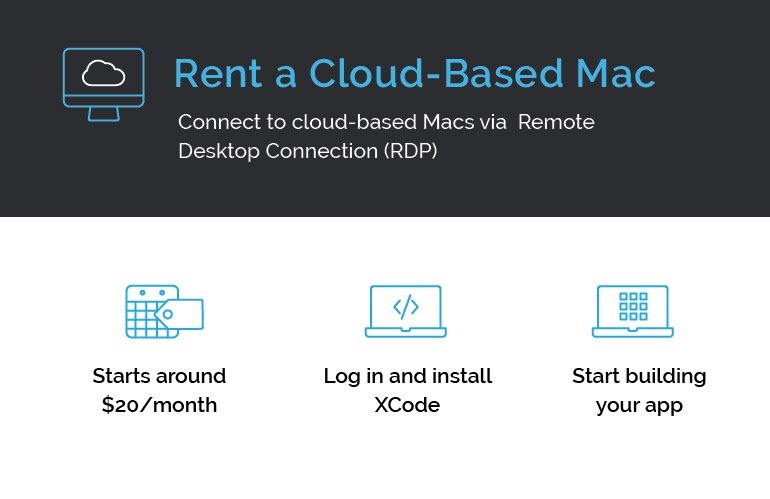How to Develop iOS Apps on Windows
Have you been wanting to develop iOS apps but the only thing stopping you is that you primarily use Windows? Maybe you’re just wanting to explore working with iOS app development but don’t want to commit to buying an iOS device quite yet. Regardless of the reason you’ve been wondering if you can develop iOS apps on a Windows PC.
To make a long explanation short: You can’t. Or at least, you shouldn’t.
The main reason why you can’t is that Windows is not compatible with Xcode, which is the Integrated Development Environment (IDE) used to design, develop, and publish iOS apps. Xcode contains everything needed to build iOS apps, including the Swift compiler, Interface Builder, and the tools needed to publish your apps to the App Store.
If you’ve been wanting to get started on making an iOS app on your Windows PC, this presents a problem. Because Apple does not license its operating system outside of its own hardware, you cannot buy a PC with macOS on it. Although Apple released Swift as an open-source, we still recommend one of these workarounds you could theoretically use in a pinch for personal use.
But really, we highly highly recommend you DO NOT do these workarounds. Of course, if you are asking for a friend who insists, here are a few options.
1. Install macOS Onto a Virtual Machine on Your Windows PC

Using virtualization software is another option to get macOS running on your Windows PC as a host. The services are very similar to using a Remote Desktop Connection but are instead running on your own computer.
This method is a bit more technical to get up and running than paying for a Mac in the Cloud, but services like VirtualBox have made making virtual machines much easier. Virtualbox (free) and VMWare Workstation (paid) are the most popular options to do this.
Once you’ve downloaded Virtualbox, there are several guides online that can help you get MacOS running on your virtual machine.
2. Rent a Cloud-Based Mac

A simpler way to start developing with macOS on your PC is by renting a Mac in the Cloud. There are several services available like MacinCloud, MacStadium, and XcodeClub that will allow you to connect to cloud-based Macs via Remote Desktop Connection (RDP).
Pricing will vary per service but typically starts at $20/month with various hardware options that will work best for your needs. You can access your rented Mac by using the stock Remote Desktop Client on Windows 10. Several Linux operating systems also provide a stock RDP client as well. Once you’ve logged on you can install XCode and start building your app.
Cloud-based Mac services usually offer the following:
- A dedicated Mac, which means you get access to a physical Mac located in a data center
- A virtual Mac, which means you get access to a virtual Mac in a data center, running on virtualization software
- A Mac Build Server, which is a specialized kind of Mac that can be used to compile iOS apps
3. Use an Alternative to XCode
The good news is that there are cross-platform tools available. Allowing you to code your app once, then export it to iOS or Android. There are complete Integrated Development Environments like Xamarin, which primarily use C# to code, in addition to other tools like PhoneGap, Cordova, Ionic, and Appcelerator. It is important to note that the one thing that these tools have in common is that they are not beginner-friendly. It’s just a lot easier to get access to a Mac and XCode, learn Swift, then build a simple app.
In Short…
If you haven’t yet made the commitment to switch to Apple and learn iOS development on a Mac, hopefully, the resources listed above will help you further explore developing apps on macOS. Whether it’s a cloud-based Mac or a virtual machine Mac on VirtualBox, you need macOS to run Xcode.
So please, don’t try to develop iOS apps on windows.
Learn the right way by applying for Devmountain’s coding bootcamp. Our 13-week iOS Development immersive bootcamp helps students learn and apply Apple-related coding skills in order to start a career in iOS development. Students can learn iOS development via our immersive course at our Lehi campus.
Recommended Reading
This Is How to Learn iOS Development
How to Create an iOS App: 5 Steps to Make It Happen
20 Tips from 20 Students on How to Land An iOS Development Job







